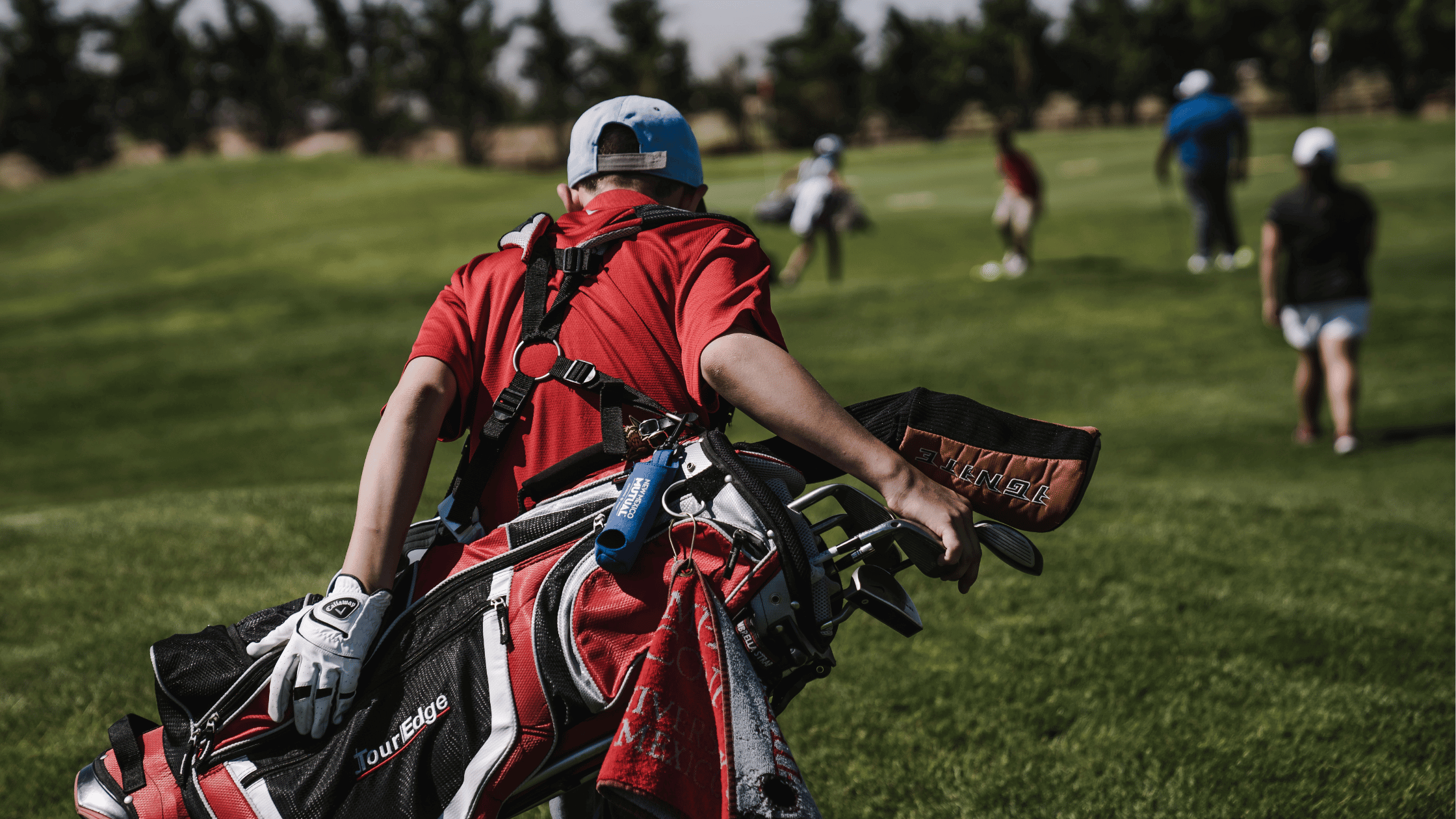Enhancing Your Golf Game: Understanding the Essential Equipment

Licensed Physical Therapist, PT, DPT // Dry Needling Certified // Titleist Performance Institute Certified // Director of Player Development, EW Golf // EW Motion Therapy Homewood // EW Motion Therapy Trussville
Golf combines precision, skill, and strategy. While a golfer's prowess relies heavily on technique and experience, having the right equipment is vital in optimizing performance on the course. But learning the different types of clubs and balls can seem overwhelming - how do you pick the right equipment for various shots? While some knowledge can come with experience, our golf team at EW Motion Therapy can be an excellent resource to prepare your body to play your best game. Even if you decide our golf team isn’t a good fit for you, you can still read on as we delve into the three essential golf equipment components: balls, clubs, and tees. Understanding their purpose and benefits enables you to make informed choices to improve your golfing experience.
Golf balls
The golf ball is the heart of the game, determining each shot’s distance, trajectory, and control. Although seemingly small, golf balls come in various types, each tailored to specific player preferences and abilities.
- Two-piece golf balls: These are the most common and typically have a solid rubber core encased in a durable cover. They offer maximum distance and durability, making them ideal for beginners or players with higher swing speeds.
- Multi-layer golf balls: Designed for more advanced players, multi-layer balls feature a soft core surrounded by progressively firmer layers. This construction provides enhanced spin control, increased feel, and improved greenside performance.
- Tour performance golf balls: Preferred by professional golfers, these balls deliver exceptional control, feel, and spin. They are engineered for players with faster swing speeds, allowing them to shape shots precisely and optimize performance in every game aspect.
Golf clubs
Golf clubs are an extension of a golfer's skill, and choosing the proper set can significantly impact your game. There are four primary types of clubs:
- Woods: Typically made of metal or composite materials, woods can make long-distance shots off the tee. The larger clubheads and longer shafts generate more power, allowing players to cover substantial distances. Woods are commonly used for tee shots and fairway shots on longer holes.
- Irons: Irons are versatile clubs used for various shots on the course, numbered from 3 to 9. Irons offer different lofts and are essential for approach shots to the green. Lower-numbered irons have lower lofts and generate longer shots, while higher-numbered irons provide higher loft for shorter, more controlled shots.
- Wedges: Wedges are specialized irons designed for shots requiring high precision and control around the green. Common types include pitching wedges, sand wedges, and lob wedges. They excel in bunker shots, chipping, and pitch shots, allowing golfers to get the ball close to the hole.
- Putters: Putters are the most critical clubs in a golfer's bag for accurate short-distance shots on the green. With a flat face and low loft, putters are designed explicitly for rolling the ball smoothly along the green surface. Choosing a putter that suits your stroke style provides an optimal feel for sinking crucial putts.
Golf tees
Golf tees might seem like a minor accessory, but they are crucial in optimizing a golfer's performance off the tee. Tees are small pegs made of wood or plastic, elevating the golf ball to the desired height for the tee shot.
Using the right tee can offer several advantages, such as:
- Consistent height: Tees help maintain a consistent ball height, enabling golfers to strike the ball consistently for improved accuracy and control.
- Customization: Different tee lengths allow golfers to adjust the ball's height, catering to personal preferences and the demands of each hole or club.
- Reduced friction: Using tees reduces the friction between the ball and the ground, resulting in less resistance during the tee shot and potentially greater distance.
Why is the correct golf equipment essential?
Using the right equipment when playing golf is essential for several reasons:
- Optimized performance: Golf equipment is designed to enhance specific aspects of your game. Using the appropriate gear can maximize your potential and achieve better results. For example, using a golf ball with the proper compression and spin characteristics can help you achieve longer drives and better control around the greens. Similarly, selecting clubs that suit your swing style and skill level can improve accuracy, distance, and shot-making capabilities.
- Consistency: Consistency is key in golf. By using the right equipment, you can establish a consistent playing experience. When familiar with your clubs' characteristics, such as their weight, balance, and feel, you can develop a repeatable swing and make consistent contact with the ball. Consistency in equipment ensures you can trust your gear and rely on it during crucial shots.
- Comfort and confidence: Playing with equipment that suits your physical attributes and preferences enhances comfort and boosts confidence on the course. Comfortable clubs with proper grip size, shaft flex, and weight distribution allow you to swing more freely and comfortably, enabling you to execute your shots more efficiently. Confidence in your equipment positively affects your mindset and overall performance, leading to better scores and game enjoyment.
- Injury prevention: Golf is a repetitive motion sport, and using the wrong equipment can lead to injuries or discomfort. Ill-fitting clubs, for instance, can strain your wrists, elbows, or back, potentially causing long-term damage. Using correctly fitted clubs can minimize the risk of injury and play the game comfortably and pain-free.
- Adaptation to course conditions: Different courses and weather conditions require adjustments in equipment selection. For example, some golf balls may perform better in windy conditions, while others excel in wet or dry conditions. Clubs with different lofts and bounce angles are better suited for specific turf types and course layouts. Adapting your equipment to the course conditions can help you navigate the challenges more effectively and improve your overall performance.
- Personalized game improvement: Your equipment needs may change as your game evolves. Upgrading or adjusting your equipment allows you to adapt to your evolving swing and skill level. Customized fittings can help optimize your equipment based on your unique swing characteristics, maximizing your potential and addressing any specific weaknesses in your game.
Using the right equipment in golf is crucial for optimizing performance, achieving consistency, ensuring comfort, and preventing injuries. The right gear enhances your overall game and contributes to your enjoyment and satisfaction on the course. By investing in suitable golf equipment, you set yourself up for success and pave the way for improvement and growth in golf. You can always visit a pro or discuss equipment in your golf lessons. But, if you want to learn strategies for increased mobility and flexibility on the course, our golf team at EW Motion Therapy might be an excellent ally for your golf career. If you are a beginner and want to learn more about golf, click the button below to download our answers to 20 frequently asked questions.


